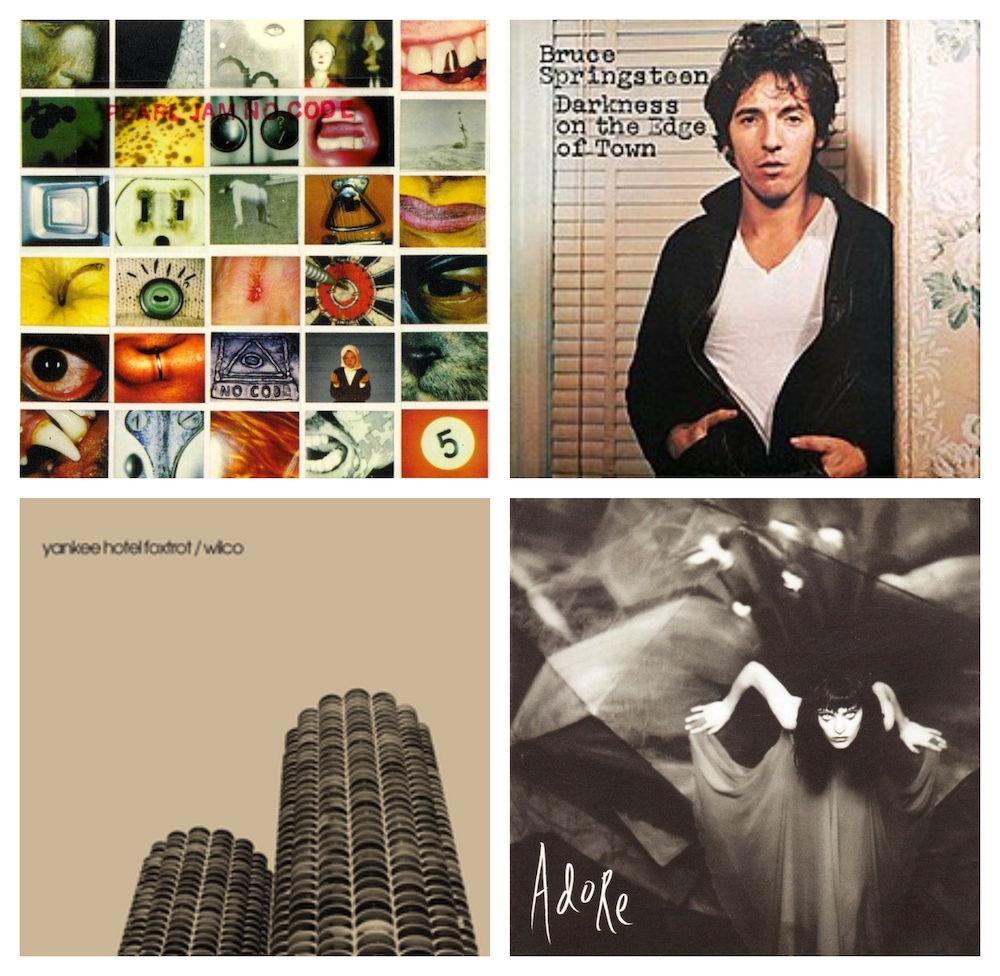Talking Heads – Remain in Light (1980)
The fourth Talking Heads album, and their third in a row with producer Brian Eno, wasn’t a runaway success initially. In fact, it was, and for many years remained, their only album that didn’t generate a Hot 100 hit. But where radio may have been flummoxed by the album’s dense Afrobeat-inspired sound, a new promotional outlet would soon open up. Nearly a year after Remain in Light was released, MTV made its television debut, and the surreal Toni Basil-directed video for “Once in a Lifetime” ultimately became one of the band’s most iconic moments, with or without chart success. Talking Heads splintered into solo and side projects for the next couple years, and after they reconvened, this time without Brian Eno, they incorporated the funky innovations of Remain in Light into slicker, shinier songs like “Burning Down the House,” and returned to the Hot 100.
Choice cut: “Born Under Punches (The Heat Goes On)”
Talk Talk – Spirit of Eden (1988)
The London synth-pop group Talk Talk shared a producer with tourmates Duran Duran in their early days, launching a series of international hit singles with their first three albums. But even given their Roxy Music-influenced experimental side from the beginning, Talk Talk’s fourth album Spirit of Eden was a radical departure from everything they’d previously done. A year’s worth of in-studio improvisations were edited down into six long, jazzy and abstract compositions. There’s a startling sense of stillness and open space, with moments of near-silence and slowly building movements that resemble a symphony more than a pop album. Anticipating resistance to their new direction before completing the album, the band attempted to leave their label, EMI, which released it. EMI then sued the band over the “commercially unsatisfactory” album. Founding bassist Paul Webb soon left Talk Talk, and the band recorded only one more album, 1991’s similarly uncompromising Laughing Stock, before disbanding. But those two albums became cult classics that established Talk Talk’s reputation as a major influence on ‘90s post-rock.
Choice cut: “Desire”
Pearl Jam – No Code (1996)
Pearl Jam were arguably the biggest band in the world in 1996 and had maintained that position while defiantly doing things their own way: ceasing to shoot music videos, making increasingly experimental albums, and feuding with concert industry giant Ticketmaster. But their fourth album was the point where the band’s fanbase started to get noticeably smaller, with the sitar-tinged lead single “Who You Are” hitting No. 1 on the Modern Rock chart but then quickly disappearing from playlists that were increasingly full of the very different sounds of Beck and No Doubt. Thanks to the arrival of former Red Hot Chili Peppers drummer Jack Irons, it was one of Pearl Jam’s most lively and creative albums, full of dense polyrhythms and ragged rockers influenced by the band’s recent stint backing Neil Young. But without a big crossover hit like “Better Man,” and their efforts to tour hamstrung by the Ticketmaster boycott, No Code sold a fraction as much as its predecessors.
Choice cut: “In My Tree”
The Smashing Pumpkins – Adore (1998)
With 1995’s double album Mellon Collie & The Infinite Sadness, Smashing Pumpkins reached the pinnacle of their success. But things began to fall apart when keyboardist Jonathan Melvoin fatally overdosed during the tour, and drummer Jimmy Chamberlin was subsequently fired from the band for his drug use. Without the band’s powerhouse drummer, the fourth Smashing Pumpkins album was very different, with Billy Corgan leaning heavily on ballads mourning his mother and electronic experiments with drum machines – even the songs featuring session drummers veered away from the band’s typical arena-rock grandeur. But the album’s muted reception grew into a passionate cult following, and when a deluxe reissue of Adore was released in 2014, Billy Corgan told Esquire, “The two albums people talk to me about the most are Siamese Dream and Adore.”
Choice cut: “For Martha”
Radiohead – Kid A (2000)
The world had its eyes on Radiohead as they patiently worked on the follow-up 1997’s OK Computer. But even to the extent that the band had earned a reputation for challenging art rock, Kid A stirred up lively debate among fans and detractors after the three-year wait. A band that featured three guitarists had dropped an album where you can’t hear any recognizable guitars until the fourth track, and played with the slippery 5/4 time signature on “Everything In Its Right Place” and “Morning Bell.” But the music on Kid A, featuring everything from horns to glitchy electronics to obscure instruments like the ondes Martenot, became an object of endless fascination for listeners, solidifying Radiohead’s place as rock’s most creatively restless and cerebral platinum band.
Choice cut: “The National Anthem”
Wilco – Yankee Hotel Foxtrot (2002)
Wilco had drifted away from the alt-country sound of Jeff Tweedy’s previous band Uncle Tupelo over its first three albums. But the art-rock sound Tweedy wanted to pursue with new collaborator Jim O’Rourke on the band’s fourth album was met with resistance from both Wilco multi-instrumentalist Jay Bennett and the band’s label. By the time Yankee Hotel Foxtrot was completed in 2001, Bennett and original drummer Ken Coomer were out of the band, and Reprise Records had refused to release it as constructed. Streaming the album for free on its website, Wilco attracted a groundswell of support for their new direction. They signed with another Warner Bros. subsidiary, Nonesuch Records, and the album became Wilco’s biggest seller once it was properly released in 2002, and kicked off the band’s celebrated second chapter.
Choice cut: “I Am Trying To Break Your Heart”
Kanye West – 808s & Heartbreak (2008)
Before Kanye West even released his debut album, he openly shared long term plans for the titles of his first four albums, all following the same theme: The College Dropout, Late Registration, Graduation, and Good Ass Job. He stuck to the plan up through the 2007 release of Graduation, and then life intervened and flipped the script (although as recently as 2018, West had announced his intentions to finally make Good Ass Job, with the help of Chance The Rapper). West’s breakup with his longtime girlfriend and the 2007 death of his mother left the superstar rapper/producer in a deep funk. Newer artists exploring the gray area between rapping and singing like T-Pain and Kid Cudi influenced him to make an album far more melodic and emotional than his previous work. 808s & Heartbreak may have been more divisive and unevenly received than his earlier albums. But it went platinum and blanketed radio airwaves, and helped point the way towards the sound that West and new stars like Drake would spend the next decade chasing.
Choice cut: “Welcome To Heartbreak”
Beyonce – 4 (2011)
Beyonce took the first sustained break of her whirlwind career after her third album and decided to shake up her very successful formula. Recording dozens of songs while finding inspiration in Fela Kuti and ‘70s rock, and working with hip new songwriters like Frank Ocean, 4 became Beyonce’s most critically acclaimed album to date. The album was harder to sell to the public – after a decade of regularly topping the Hot 100, none of the singles from 4 made it into the chart’s top 10. But R&B radio still embraced soulful songs like “Love On Top” even if it didn’t jibe with Top 40’s newfound embrace of EDM. And the more personal and creative direction of 4 set the stage for the runaway success of Beyonce’s self-titled album in 2013.
Choice Cut: “I Care”





